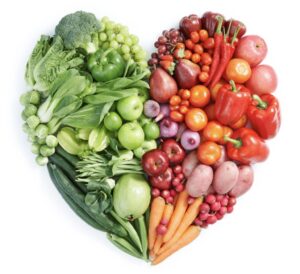A Potassium-Rich Diet Can Lower Your Risk of High Blood Pressure

Americans need to get more potassium in their diet to help lower the risk of high blood pressure, kidney stones, osteoporosis, and stroke. Women should get 2,600 mg and men should get 3,400 mg of potassium every day. Most Americans don’t meet that goal on a daily basis.
The Body Contains Potassium
Potassium, a mineral which is referred to as an electrolyte, is about two times more plentiful in the body than salt. An average man contains about 270 milligrams of potassium in his body. Most of the potassium is found inside the cells and is the major cation in the intracellular fluid. However, a small amount is found in the extracellular (outside the cell) but this potassium source plays a significant role in muscle activity, especially the heart muscle. Potassium is responsible for maintaining the electrical stability of the cells of heart and nervous system.
Potassium a Metabolic Workhorse
Potassium’s major role is to maintain fluid and electrolyte balance. Potassium functions in a balance with extracellular sodium to maintain normal osmotic pressure and the water balance in the cellular fluid. During muscle contraction, potassium and sodium briefly exchange places across the cell membrane and then the process is quickly reversed. It’s this sodium-potassium pump that regulates the water in and out of the cell which can therefore influence one’s blood pressure.
In addition to regulating the fluid-electrolyte balance, potassium also influences muscle activity, particularly the heart (cardiac) muscle. Potassium functions with sodium and calcium ions to regulate the neuromuscular excitability and stimulation, transmission of the electrochemical impulses and contraction of heart and other muscle fibers. Small variations in serum potassium can be seen on an electrocardiogram (ECG).
Too much serum potassium, hyperkalemia, causes muscle irritability and can be life threatening. If the one experiences hyperkalemia the heart can hypertrophy and the heart rate is therefore slowed down. Whereas too little serum potassium, hypokalemia, causes muscle weakness and can potentially cause paralysis. The heart muscle can then develop an increased rhythm known as tachycardia which can lead to cardiac arrest. But fortunately for us, the kidney is responsible for maintaining this sensitive balance.
Potassium’s Role in Glycogen Storage and Protein Metabolism
In addition to regulating fluid – electrolyte balance and nerve transmission, potassium is also needed to convert blood glucose to glycogen for storage and is also required for the storage of nitrogen in muscle protein. When tissue is broken down, potassium is lost together with nitrogen. Research has also suggested that a pound of sweat contains between 80 – 100 milligrams of potassium. During a 2 – 3 hour bout of exercise, you might lose 300 – 800 milligrams of potassium (see Table 1. Potassium Found in Food and Calories per Standard Portion). People who are active may need to concentrate on choosing potassium rich foods for recovery.
Because foods that are typically high in potassium come from fruits and vegetables, you will also be getting a wide variety of nutrients and phytochemicals as well. Check out Table 1. Potassium Found in Food and Calories per Standard Portion and try to incorporate adequate amounts for potassium daily. Potassium rich foods may not only help to control your blood pressure but they may also help prevent the development of other disease processes as well.
Table 1. Potassium Found in Food and Calories per Standard Portion
FOODbc | STANDARD PORTIONd | CALORIES | POTASSIUM (mg) | ||
Vegetables | |||||
Beet greens, cooked | 1 cup | 39 | 1309 | ||
Fufu, cooked | 1 cup | 398 | 1080 | ||
Lima beans, cooked | 1 cup | 209 | 969 | ||
Swiss chard, cooked | 1 cup | 35 | 961 | ||
Potato, baked, with skin | 1 medium | 161 | 926 | ||
Yam, cooked | 1 cup | 158 | 911 | ||
Acorn squash, cooked | 1 cup | 115 | 896 | ||
Amaranth leaves, cooked | 1 cup | 28 | 846 | ||
Spinach, cooked | 1 cup | 41 | 839 | ||
Breadfruit, cooked | 1 cup | 170 | 808 | ||
Bamboo shoots, raw | 1 cup | 41 | 805 | ||
Water chestnuts | 1 cup | 120 | 724 | ||
Carrot juice, 100% | 1 cup | 94 | 689 | ||
Taro leaves, cooked | 1 cup | 35 | 667 | ||
Plantains, cooked | 1 cup | 215 | 663 | ||
Taro root (dasheen or yautia), cooked | 1 cup | 187 | 639 | ||
Adzuki beans, cooked | 1/2 cup | 147 | 612 | ||
Cress, raw | 2 cups | 32 | 606 | ||
Butternut squash, cooked | 1 cup | 82 | 582 | ||
Parsnips, cooked | 1 cup | 110 | 572 | ||
Sweet potato, cooked | 1 cup | 190 | 572 | ||
Luffa gourd, cooked | 1 cup | 100 | 571 | ||
Chrysanthemum leaves, cooked | 1 cup | 20 | 569 | ||
Purslane, cooked | 1 cup | 21 | 561 | ||
Kohlrabi, cooked | 1 cup | 48 | 561 | ||
Broccoli raab, cooked | 1 cup | 40 | 550 | ||
Drumstick pods (moringa), cooked | 1 cup | 42 | 539 | ||
Mushrooms, portabella, cooked | 1 cup | 35 | 529 | ||
Stewed tomatoes, canned | 1 cup | 66 | 528 | ||
Tomato juice, 100% | 1 cup | 41 | 527 | ||
Vegetable juice, 100% | 1 cup | 48 | 518 | ||
Mustard spinach, cooked | 1 cup | 29 | 513 | ||
Pumpkin, canned | 1 cup | 83 | 505 | ||
White beans, cooked | 1/2 cup | 125 | 502 | ||
Winter squash, cooked | 1 cup | 76 | 494 | ||
Artichoke, cooked | 1 cup | 89 | 480 | ||
Celeriac, raw | 1 cup | 66 | 468 | ||
Dandelion greens, cooked | 1 cup | 35 | 455 | ||
Cassava (yucca), cooked | 1 cup | 267 | 451 | ||
Burdock root, cooked | 1 cup | 110 | 450 | ||
Bok choy, cooked | 1 cup | 24 | 445 | ||
Soybeans, cooked | 1/2 cup | 148 | 443 | ||
Lotus root, cooked | 1 cup | 108 | 440 | ||
Poi (taro root) | 1 cup | 269 | 439 | ||
Pink beans, cooked | 1/2 cup | 126 | 430 | ||
Small white beans, cooked | 1/2 cup | 127 | 415 | ||
Carrots, raw | 1 cup | 52 | 410 | ||
Black turtle beans, cooked | 1/2 cup | 120 | 401 | ||
Snow peas, cooked | 1 cup | 67 | 384 | ||
Corn, cooked | 1 cup | 134 | 384 | ||
Salsify, cooked | 1 cup | 92 | 382 | ||
Pinto beans, cooked | 1/2 cup | 123 | 373 | ||
Escarole, cooked | 1 cup | 22 | 368 | ||
Rutabaga, cooked | 1 cup | 51 | 367 | ||
Lentils, cooked | 1/2 cup | 115 | 366 | ||
Avocado | 1/2 cup | 120 | 364 | ||
Fennel bulb, raw | 1 cup | 27 | 360 | ||
Onions, cooked | 1 cup | 92 | 359 | ||
Kidney beans, cooked | 1/2 cup | 113 | 359 | ||
Split peas, cooked | 1/2 cup | 116 | 355 | ||
Navy beans, cooked | 1/2 cup | 128 | 354 | ||
Great northern beans, cooked | 1/2 cup | 105 | 346 | ||
Cowpeas, dried and cooked | 1/2 cup | 80 | 345 | ||
Cranberry (roman) beans, cooked | 1/2 cup | 121 | 343 | ||
Edamame, cooked | 1/2 cup | 94 | 338 | ||
French beans, cooked | 1/2 cup | 114 | 328 | ||
Hyacinth beans, cooked | 1/2 cup | 114 | 327 | ||
Pigeon peas, cooked | 1/2 cup | 102 | 323 | ||
Cauliflower, raw | 1 cup | 27 | 320 | ||
Red bell pepper, raw | 1 cup | 39 | 314 | ||
Black beans, cooked | 1/2 cup | 114 | 306 | ||
Nettles, cooked | 1 cup | 37 | 297 | ||
Summer squash, cooked | 1 cup | 18 | 296 | ||
Turnip greens, cooked | 1 cup | 29 | 292 | ||
Nopales, cooked | 1 cup | 22 | 291 | ||
Yellow beans, cooked | 1/2 cup | 128 | 288 | ||
Fava beans, cooked | 1/2 cup | 94 | 228 | ||
Collard greens, cooked | 1 cup | 63 | 222 | ||
Fruit | |||||
Durian | 1 cup | 357 | 1059 | ||
Sapote or Sapodilla | 1 cup | 217 | 794 | ||
Jackfruit | 1 cup | 157 | 739 | ||
Prune juice, 100% | 1 cup | 182 | 707 | ||
Guava | 1 cup | 112 | 688 | ||
Passion-fruit juice, 100% | 1 cup | 126 | 687 | ||
Soursop | 1 cup | 148 | 626 | ||
Kiwifruit | 1 cup | 110 | 562 | ||
Pomegranate juice, 100% | 1 cup | 134 | 533 | ||
Orange juice, 100% | 1 cup | 112 | 496 | ||
Melon, cantaloupe | 1 cup | 60 | 473 | ||
Cherimoya | 1 cup | 120 | 459 | ||
Banana | 1 medium | 112 | 451 | ||
Tangerine juice, 100% | 1 cup | 106 | 440 | ||
Grapefruit | 1 fruit | 130 | 415 | ||
Pummelo | 1 cup | 72 | 410 | ||
Apricots | 1 cup | 74 | 401 | ||
Peaches, dried | 1/4 cup | 96 | 399 | ||
Loquats | 1 cup | 70 | 396 | ||
Melon, honeydew | 1 cup | 61 | 388 | ||
Apricots, dried | 1/4 cup | 78 | 378 | ||
Grapefruit juice, 100% | 1 cup | 95 | 362 | ||
Lychee | 1 cup | 125 | 325 | ||
Pineapple juice, 100% | 1 cup | 132 | 325 | ||
Mandarin orange | 1 cup | 103 | 324 | ||
Tangerine (tangelo) | 1 cup | 103 | 324 | ||
Prunes or dried plum | 1/4 cup | 105 | 319 | ||
Melon, casaba | 1 cup | 48 | 309 | ||
Raisins | 1/4 cup | 123 | 307 | ||
Cherries | 1 cup | 87 | 306 | ||
Gooseberries | 1 cup | 66 | 297 | ||
Peach | 1 cup | 60 | 293 | ||
Dairy and Fortified Soy Alternatives | |||||
Yogurt, plain, nonfat | 8 ounces | 137 | 625 | ||
Yogurt, plain, low fat | 8 ounces | 154 | 573 | ||
Kefir, plain, low fat | 1 cup | 104 | 399 | ||
Milk, fat free (skim) | 1 cup | 83 | 382 | ||
Buttermilk, low fat | 1 cup | 98 | 370 | ||
Milk, low fat (1 %) | 1 cup | 102 | 366 | ||
Yogurt, Greek, plain, nonfat | 8 ounces | 134 | 320 | ||
Yogurt, Greek, plain, low fat | 8 ounces | 166 | 320 | ||
Soy beverage (soy milk), unsweetened | 1 cup | 80 | 292 | ||
Protein Foodse | |||||
Clams | 3 ounces | 126 | 534 | ||
Skipjack tuna | 3 ounces | 112 | 444 | ||
Shad | 3 ounces | 214 | 418 | ||
Mullet | 3 ounces | 128 | 389 | ||
Pollock | 3 ounces | 100 | 388 | ||
Rainbow trout, freshwater | 3 ounces | 142 | 383 | ||
Whiting | 3 ounces | 99 | 368 | ||
Herring | 3 ounces | 172 | 356 | ||
Goat | 3 ounces | 122 | 344 | ||
Tempeh | 1/2 cup | 160 | 342 | ||
Atlantic mackerel | 3 ounces | 223 | 341 | ||
Sardines, canned | 3 ounces | 177 | 338 | ||
Tilapia | 3 ounces | 108 | 323 | ||
Cod | 3 ounces | 71 | 316 | ||
Smelt | 3 ounces | 105 | 316 | ||
Catfish | 3 ounces | 122 | 311 | ||
Bison | 3 ounces | 122 | 307 | ||
Pork | 3 ounces | 171 | 303 | ||
Tofu, raw, firm, prepared with calcium sulfate | 1/2 cup | 181 | 299 | ||
Haddock | 3 ounces | 77 | 298 | ||
Beef | 3 ounces | 173 | 288 | ||
Pistachio nuts | 1 ounce | 162 | 286 | ||
Deer | 3 ounces | 134 | 285 | ||
Lamb | 3 ounces | 158 | 285 | ||
Salmon (various) | 3 ounces | ~115-175 | ~280-535 | ||
Game meats (various) | 3 ounces | ~115-180 | ~285-345 | ||
Other Sources | |||||
Coconut water, unsweetened | 1 cup | 43 | 396 | ||
a All foods listed are assumed to be in nutrient-dense forms; lean or low-fat and prepared with minimal added sugars, saturated fat, or sodium.
b Some fortified foods and beverages are included. Other fortified options may exist on the market, but not all fortified foods are nutrient-dense. For example, some foods with added sugars may be fortified and would not be examples in the lists provided here.
c Some foods or beverages are not appropriate for all ages, (e.g., nuts, raw carrots), particularly young children for whom some foods could be a choking hazard.
d Portions listed are not recommended serving sizes. Two lists—in ‘standard’ and ‘smaller’ portions–are provided for each dietary component. Standard portions provide at least 280mg of potassium. Smaller portions are generally one half of a standard portion.
e Seafood varieties include choices from the FDA/EPA joint “Advice About Eating Fish,” available at FDA.gov/fishadvice and EPA.gov/fishadvice from the “Best Choices” list. Varieties from the “Best Choices” list that contain even lower methylmercury include: flatfish (e.g., flounder), salmon, tilapia, shrimp, catfish, crab, trout, haddock, oysters, sardines, squid, pollock, anchovies, crawfish, mullet, scallops, whiting, clams, shad, and Atlantic mackerel.
Data Source: U.S. Department of Agriculture, Agricultural Research Service. FoodData Central, 2019. fdc.nal.usda.gov
Feature image from: Almay

By Barbara Day, M.S., R.D. is a registered dietitian with a Master’s Degree in clinical nutrition. She is the Chief Blog Organizer for www.DayByDayLiving.net Barbara does fundraising and social media for Veterans Lodge (www.VeteransLodge.org) The former publisher of Kentuckiana HealthFitness Magazine, Kentuckiana Healthy Woman magazine and radio show host of Health News You Can Use, Barbara has over 30 years of experience in promoting healthy lifestyles to consumers. Barbara is a former runner who walks, a spinner, hiker a mother and grandmother to 13 grandchildren.

